Immersive Installations
A dive into unexplored sensations
Neuroscience:
Only those who have had such experiences can truly understand them, however, this article is intended to address everyone: those who have experienced what it is like to visit an immersive installation may perhaps find themselves in these words; others I hope will be curious enough to try one by the end of reading.
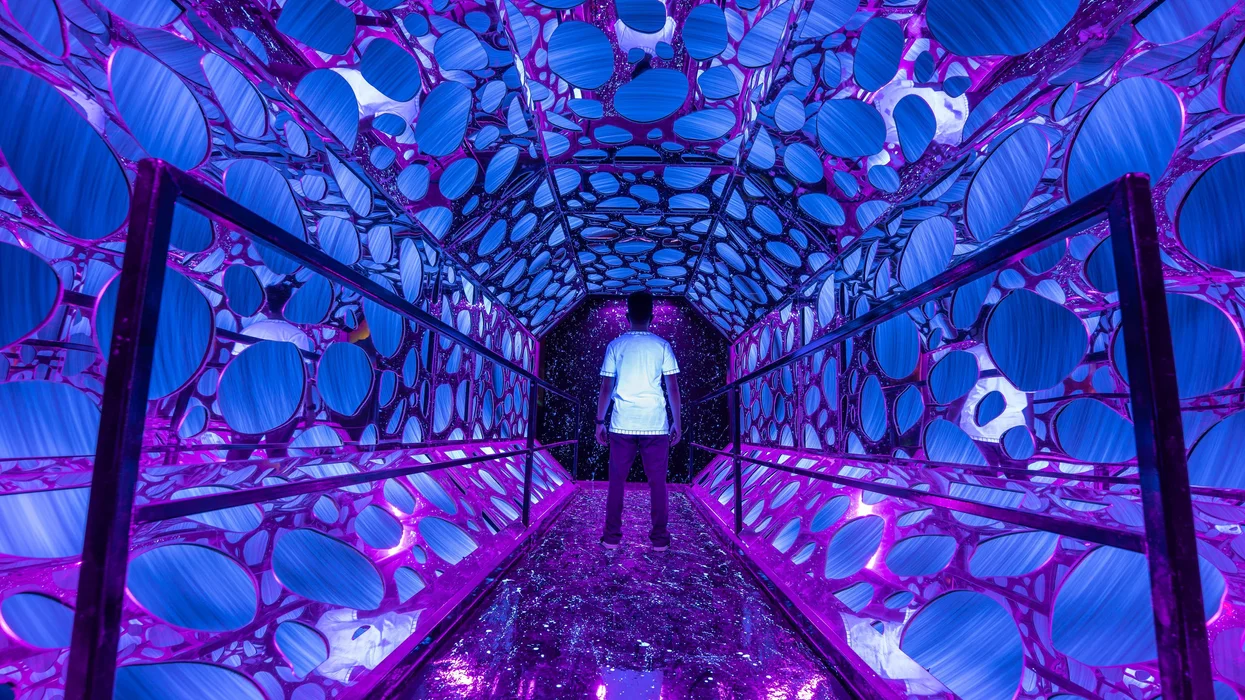 Worm Hole, 2020. Installation view at Seismique (https://seismique.com/), Houston, 2020.
Worm Hole, 2020. Installation view at Seismique (https://seismique.com/), Houston, 2020.
Photo by Rogues Hollow Production
The types of immersive art
Let us first define what is meant by immersive art. In a previous article in our blog, we told you how the concept of immersivity came about.
Authors of immersive installations design sensory environments with images, light, and sound that interact with the viewer, and all these practices share in creating a sensory experience for the visitor. The focus in these cases, in fact, is not the installation itself (whether it is a lamp, a room, or a panel) but how the person feels in observing and experiencing that specific work of art. Central to immersive installations, then, is the contemplation of feeling part of the work. These kinds of experiences can in fact generate unexpected feelings in us that involve us both emotionally and physically.
In the broad spectrum of what is called “immersive,” we can divide this type of experience into two major areas. The first includes installations in environments designed entirely with technologies such as video projections, sound specialization, light art, and the presence of actors.
The second falls into the category recently called XR (extended reality) by which we define experiences using viewers, tablets, and other computer technologies and wearable devices.
In this article we will use as examples different types of immersive installations that will allow us to understand what happens to our bodies and minds within these environments.
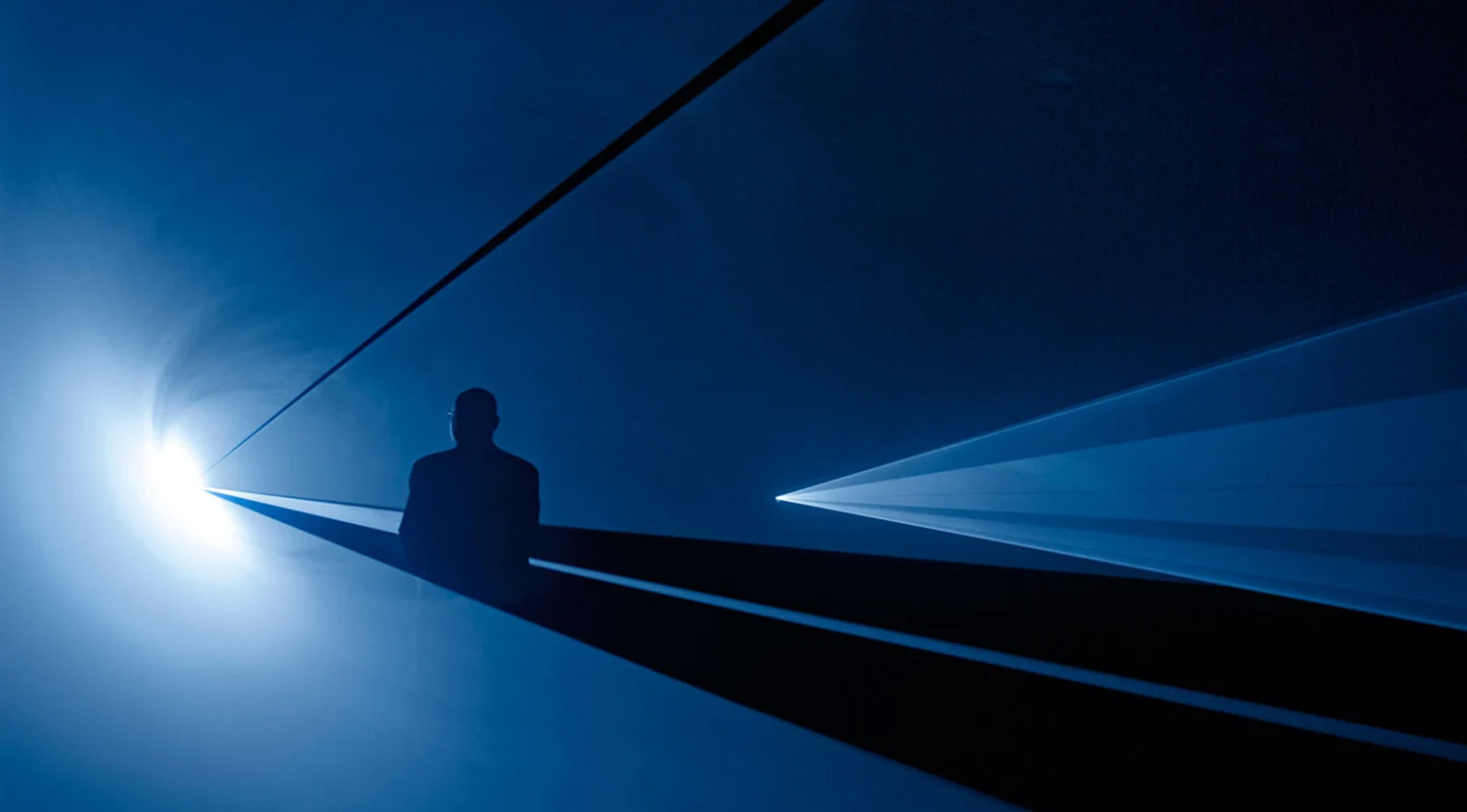 Anthony McCall, You and I Horizontal, 2006. Installation view at Institut d’Art Contemporain, Villeurbanne, France, 2006. Photo by Blaise Adilon. Courtesy Sean Kelly Gallery, New York.
Anthony McCall, You and I Horizontal, 2006. Installation view at Institut d’Art Contemporain, Villeurbanne, France, 2006. Photo by Blaise Adilon. Courtesy Sean Kelly Gallery, New York.
The body in immersive art
We are constantly influenced by our surroundings on a perceptual, sensory, psychological, and emotional level. Immersive installations are often works that draw attention to the viewer’s body.
Olafur Eliasson, a Danish artist, managed to create a light fixture that eliminates all colors. His famous yellow room consists of a very simple space with monochromatic light. Since there is no white light bouncing waves of the electromagnetic spectrum, what we perceive within this environment is a stark absence of colors. In this case, people entering this room remain speechless as they notice, looking at their own bodies, that all colors are gone. It seems indeed that the absence of color makes the subjects much more attentive to whatever else is around them.
The purpose of this and many immersive installations may in fact be to make the viewer aware of their own presence in the work and how they physically perceive these environments. The experience of such an artwork is therefore never passive, as viewing a painting can be, but is intimate and affects us deeply by going on to stimulate a “sensation of sensation” directly through our somatic system. It is precisely through this system that we perceive the world around us and the space we occupy in our environment at any given time.
The visitor therefore does not just observe these installations but rather experiences them. It is as if the room and the immersive environment bring the subject to an over-awareness of his or her body in space.
Immersive art prompts us to experience it not only through sight but through our most intimate senses such as touch, proprioception, kinesthetic sense, smell, temperature, and even pressure.
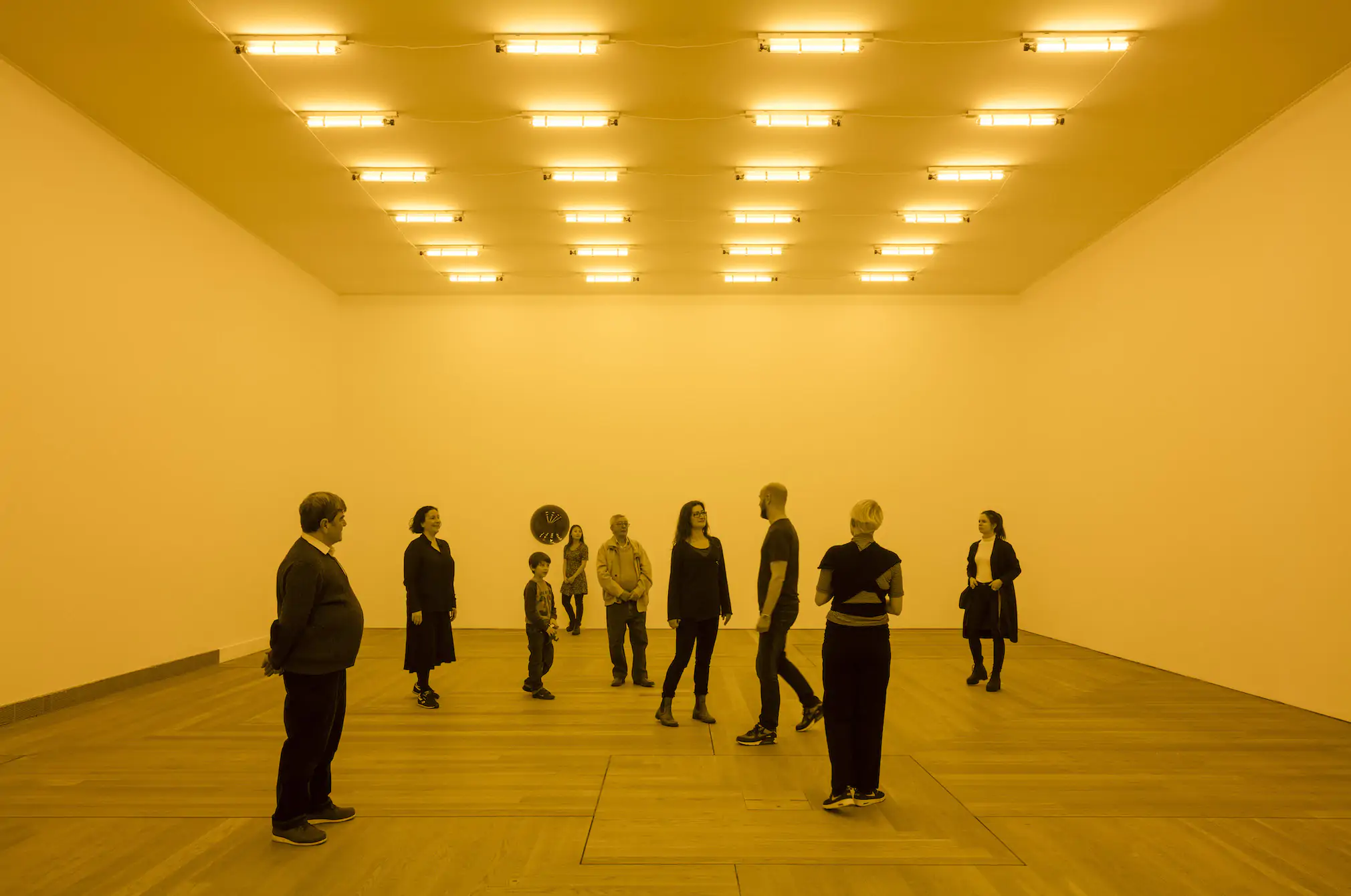 Olafur Eliasson, Room for one colour, 1997. Installation view at 21st Century Museum of Contemporary Art, Kanazawa, Japan, 2009. Photo by Anders Sune Berg the artist; neugerriemschneider, Berlin; Tanya Bonakdar Gallery, New York
Olafur Eliasson, Room for one colour, 1997. Installation view at 21st Century Museum of Contemporary Art, Kanazawa, Japan, 2009. Photo by Anders Sune Berg the artist; neugerriemschneider, Berlin; Tanya Bonakdar Gallery, New York
VR and the reality of sensations
How is it possible that being inside an immersive installation, be it an artist-designed room or a virtual reality experience, has such a strong impact on our perception and create sensations that seem to be so real?
To answer this question, let’s take as an example Richie’s Plank Experience, which, for those who do not know, is a psychological virtual reality experiment in which subjects must walk out on a plank suspended 80 stories high. This experiment is popular in art and science museums, and perhaps some of you have even experienced it. What you notice about this kind of experience is that, as much as the graphics are not perfect and you can easily tell that it’s all fake, the people who try it have very real sensations: feeling dizzy, legs shaking as if they were really on the edge of an 80-story skyscraper. But why does a virtual environment that doesn’t even look all that realistic cause people to feel such real sensations?
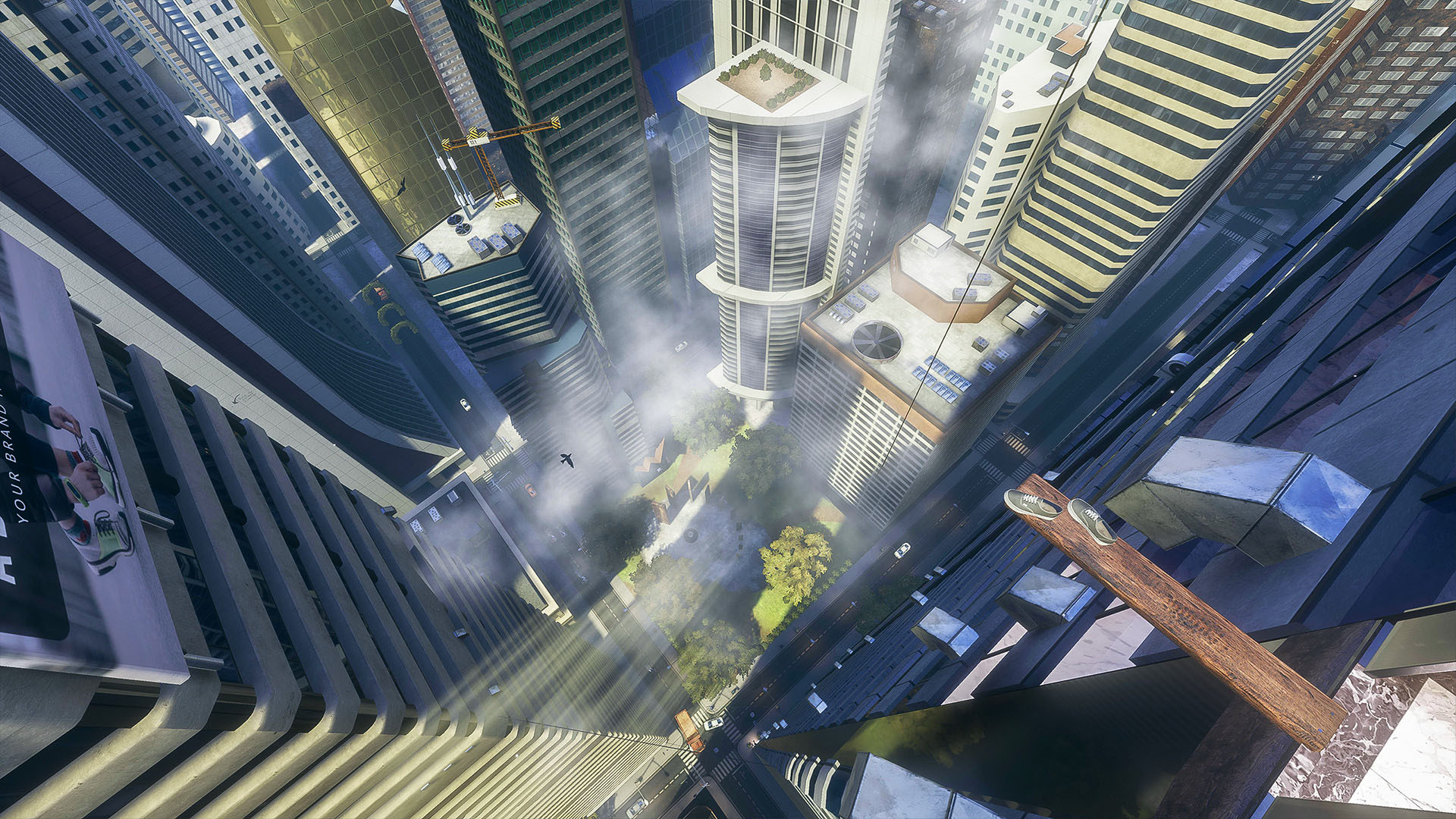 Toast VR, Richie’s Plank Experience, 2017.
Toast VR, Richie’s Plank Experience, 2017.
Virtual reality has a very different effect on our brains than a simple screen. When we watch a video on TV or a smartphone, our brain reads what it sees as a flat image. If an object on the screen gets bigger and bigger, we don’t feel that it is approaching us to the point that we feel the need to move our heads to dodge it. When we wear a headset, however, things change because we are no longer looking at one screen but at two, which exactly match our eyes. Each of these screens project slightly different images to each eye, mimicking exactly how our vision works in the real world: each eye perceives stimuli from a slightly different angle than the other. It is exactly this slight difference that allows us to perceive depth and three-dimensionality.
Another very important aspect of Virtual Reality is that because we have the headset, we are the camera, and the movement of our head determines the movement of the scene. This perfect synchronization makes the brain adapt to the situation and begin to perceive everything as if it were from the wearer’s perspective. What we see, the sound that changes based on where we turn our heads, and the perception of three-dimensionality make us perceive that environment as if it were real.
Researchers at the University of Hamburg have found that created reality can influence us so much that if we are catapulted into a winter environment, we begin to feel cold even though the room where we are in reality is properly heated.
Central to the VR experience then is the concept of embodiment, or the feeling of being present at a specific moment in a specific environment. The awareness of our body at a specific time and space is what allows us to understand that the experience we are having is real. Because of all its aforementioned features, virtual reality is able to activate our motor and sensory systems in a way that is as close to that of everyday life as possible. After a few minutes in VR, our brains begin to adapt and think that what you are seeing and experiencing is your body and your reality.
The borderless rooms of James Turrell
James Turrell is one of the greatest contemporary artists, famous for his work with light and space. Turrell has created countless immersive rooms and environments over the years.
His art is unique in that it presents no images or objects, and often does not even have a defined focal point to look at. Thus, his idea is to put the viewer in the condition of seeing and perceiving themselves. Turell, in fact, creates spaces whose sole purpose is to generate sensations.
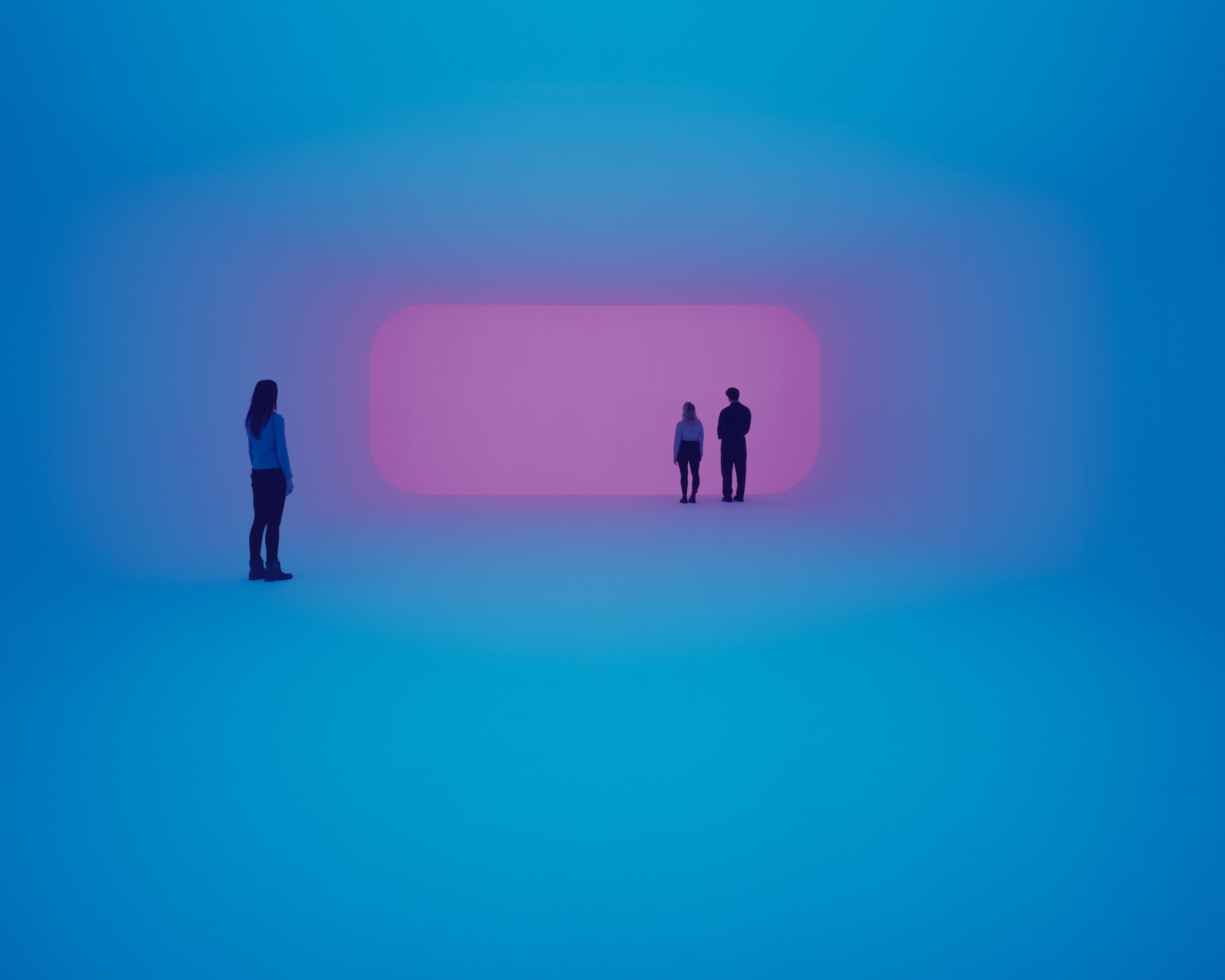 James Turrell, Aftershock, 2021. Installation view Light & Space at Copenhagen Contemporary, Photo by Florian Holzherr.
James Turrell, Aftershock, 2021. Installation view Light & Space at Copenhagen Contemporary, Photo by Florian Holzherr.
His famous immersive rooms, such as Aftershock, for example, are designed in such a way that it seems as if one is entering a space without boundaries. In these rooms, thanks to a special play of light, of which Turrell is a master, all spatial references are eliminated and the room seems like an indeterminate space that the viewer cannot fully comprehend. Our brains usually use spatial landmarks to enable us to understand our position within an environment; thus, landmarks are essential to perceive what space we occupy in the world. The lack of these spatial landmarks can generate feelings of dizziness and inability to understand what is around us.
The feeling of being in an indeterminate space and the presence of flashes that sometimes go off intermittently can generate feelings of discomfort in people that can even result in the viewer’s desire and need to leave the room. This is certainly a very different reaction from that which can be elicited by a classical artwork. In fact, as we saw in the last article, when we are in front of a painting or sculpture, our sensations and physiological activation are closer to a form of contemplation; a painting may excite us, but only up to a certain point. The power of immersive art, on the other hand, is that it engages our whole body and make us experience unexplored sensations. When we are immersed in a carefully designed room, we become hyper-aware of our body, its shape, its color, and the space it occupies in the environment.
After all, the magic of immersive art is just that: in a simple room, whether real or virtual, we can get to know ourselves a little better.
Martina Zanotto
Psychologist, Neuroscience Expert
Bibliography
Bartlem, Reshaping Spectatorship: Immersive and Distributed Aesthetics, 2005
Fake, “Arte Immersiva: storia, tendenze e casi di successo internazionale – Arts for Future Festival”, 2022
L. Kosky, Arts of Wonder, Enchanting Secularity – James Turrell, University of Chicago Press, 2012
Abstract, the Art of Design, St.2 Ep.1 Olafur Eliasson: il design dell’arte (Netflix, 2019)

